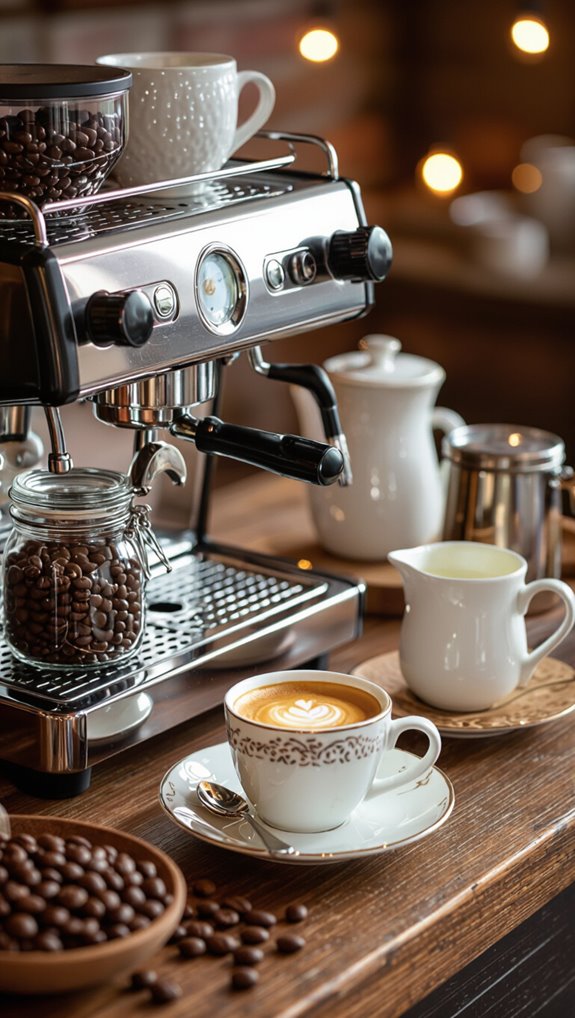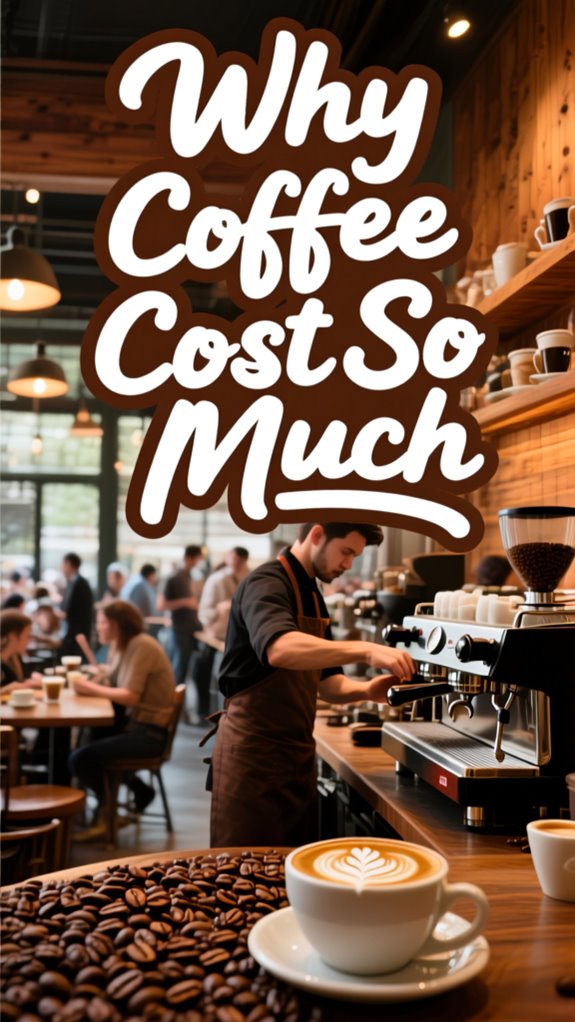Ever wonder why your morning coffee now costs as much as a small lunch? You’re not alone—millions of coffee drinkers are feeling the pinch as prices continue climbing at their favorite cafes and grocery stores.
The truth is, coffee prices have skyrocketed due to a perfect storm of challenges: climate change hammering crop yields, supply chain disruptions, rising labor costs, and complex processing requirements. These factors are squeezing farmers and roasters alike, and those costs land directly in your cup—and wallet.
In this post, I’ll break down exactly why coffee has become so expensive and share practical strategies to help you enjoy your daily caffeine fix without breaking the bank. Whether you brew at home or can’t give up your cafe visits, you’ll discover ways to navigate these pricey times while still getting the quality coffee you crave.
Table of Contents
Why Is Coffee So Expensive Right Now

Coffee prices have skyrocketed due to a perfect storm of climate disruption, supply chain challenges, and global market dynamics. Severe droughts in Brazil, the world’s largest coffee producer, have slashed Arabica and Robusta yields, creating dramatic supply shortages.
Extreme weather events in key growing regions like Vietnam and Colombia have further disrupted harvests. Global market demand has accelerated the price surge, with increasing consumption in both traditional and emerging coffee markets intensifying supply pressures.
Global shipping bottlenecks, elevated transportation costs, and rising fuel expenses compound the problem. Meanwhile, growing worldwide coffee demand—especially in emerging markets—continues to push prices higher.
Tariffs and market speculation have added additional complexity, driving coffee costs to unprecedented levels.
The Real Cost of Growing Coffee Beans
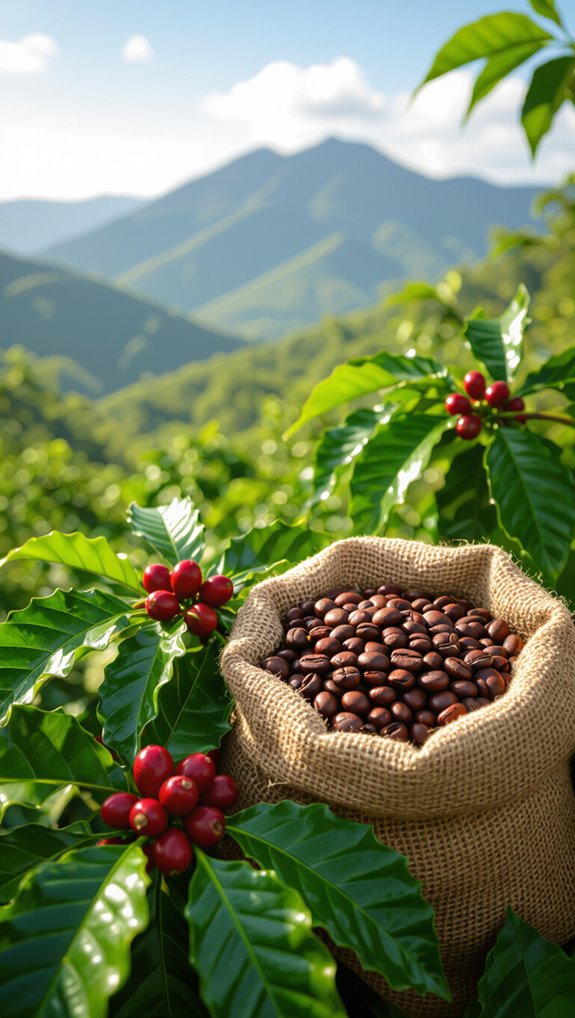
When you sip your morning brew, you mightn’t realize the complex economic journey behind each bean, where growing coffee is far more expensive and challenging than most consumers imagine.
Small farmers face staggering production costs—up to $68,000 per hectare—with significant expenses in labor, pesticides, fertilizers, and plant maintenance. Climate variability, pest management, and global market pressures further complicate coffee cultivation. Specialty coffee processing is becoming increasingly innovative, adding another layer of complexity to production costs.
Labor-intensive processes like harvesting and seasonal replanting drain financial resources, while farmers often receive just 60% of the final export price. These economic challenges mean every coffee bean represents a substantial investment of time, effort, and money.
Supply Chain Issues That Drive Up Prices
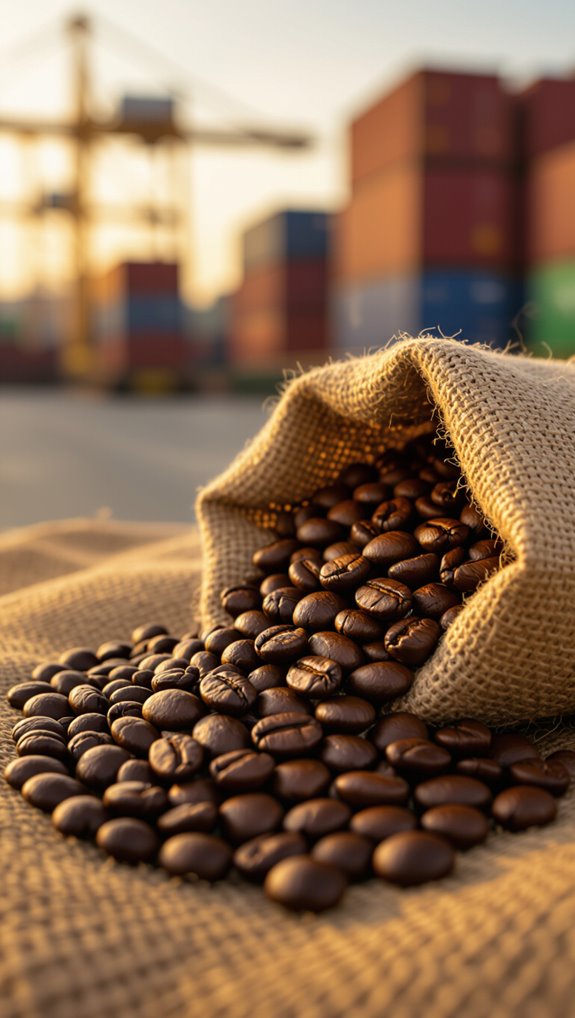
Though consumers might only see the final product on store shelves, the journey of coffee is fraught with complex supply chain challenges that dramatically inflate prices.
From devastating droughts decimating coffee crops in Brazil and Vietnam to congested U.S. ports causing shipping delays, multiple factors drive up costs.
New tariffs reaching 50% on coffee imports, persistent labor shortages in transportation, and extreme weather disrupting harvest schedules create a perfect storm of price increases. Global coffee traders are experiencing severe strain after recent years of economic disruption, further complicating the supply landscape.
These interconnected challenges force roasters to continuously adjust sourcing strategies, ultimately passing higher expenses directly to coffee lovers like you.
Specialty Coffee Versus Regular Coffee Costs
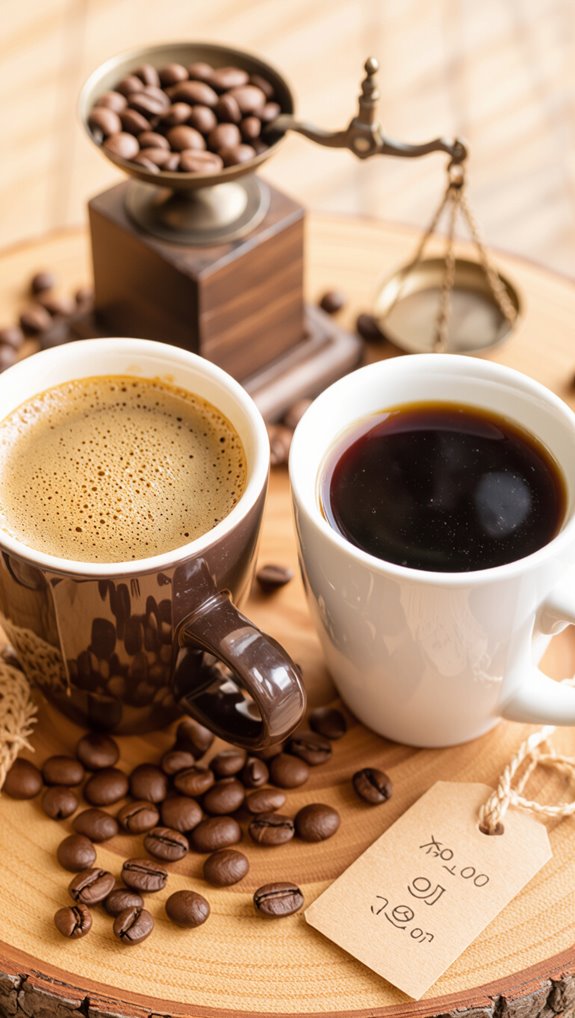
As supply chain complexities drive coffee prices skyward, consumers face another significant cost factor: the stark difference between specialty and regular coffee. The price gap stems from meticulous production standards and quality investments throughout the coffee journey.
Specialty coffee costs more due to:
- Rigorous bean selection and grading above 80 points
- Labor-intensive processing methods like wet washing
- Artisanal roasting with precision equipment
- Sustainable farming practices benefiting workers
These quality-driven expenses translate directly into higher retail prices, with specialty beans costing up to $15 per pound compared to commodity coffee’s much lower rates. Ultimately, you’re paying for a superior, more ethical cup of coffee.
Labor and Farming Expenses Behind Your Cup
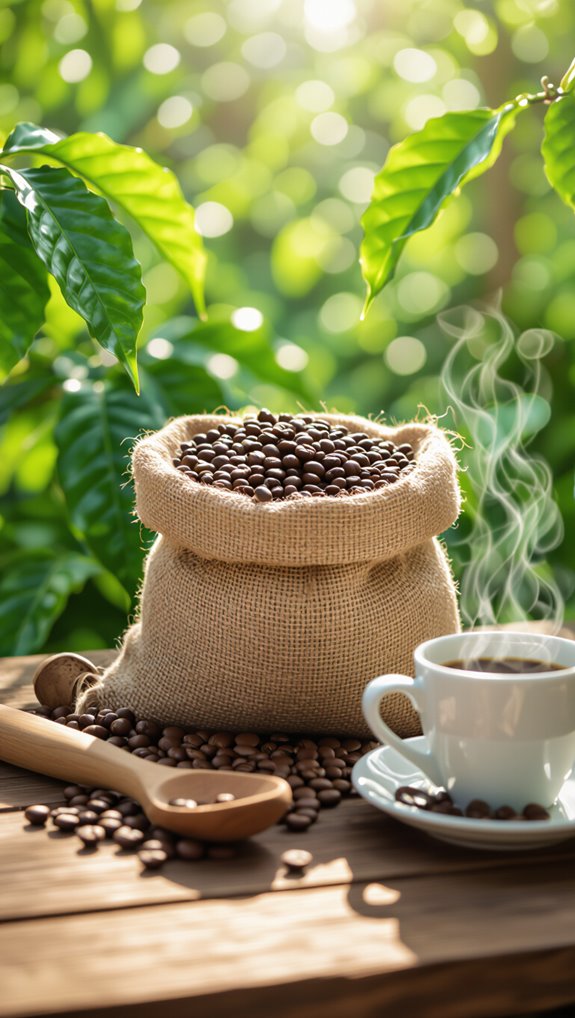
Driving up coffee prices, the complex world of labor and farming expenses reveals why your morning brew costs more than you might expect. Labor dominates production costs, consuming up to 72% of total expenses for coffee farmers. Consider the economic challenges farmers face:
| Cost Component | Percentage | Impact |
|---|---|---|
| Labor | 40-72% | Wages, harvesting |
| Inputs | ~23% | Fertilizers, maintenance |
| Logistics | Varies | Transport, processing |
Rising daily wages, climate challenges, and input costs squeeze farmer profitability. Some farmers even produce coffee at a loss, earning less than $1.31 per pound. These economic pressures ultimately flow downstream, explaining why your carefully crafted cappuccino comes with a premium price tag.
Climate Change Impact on Coffee Production
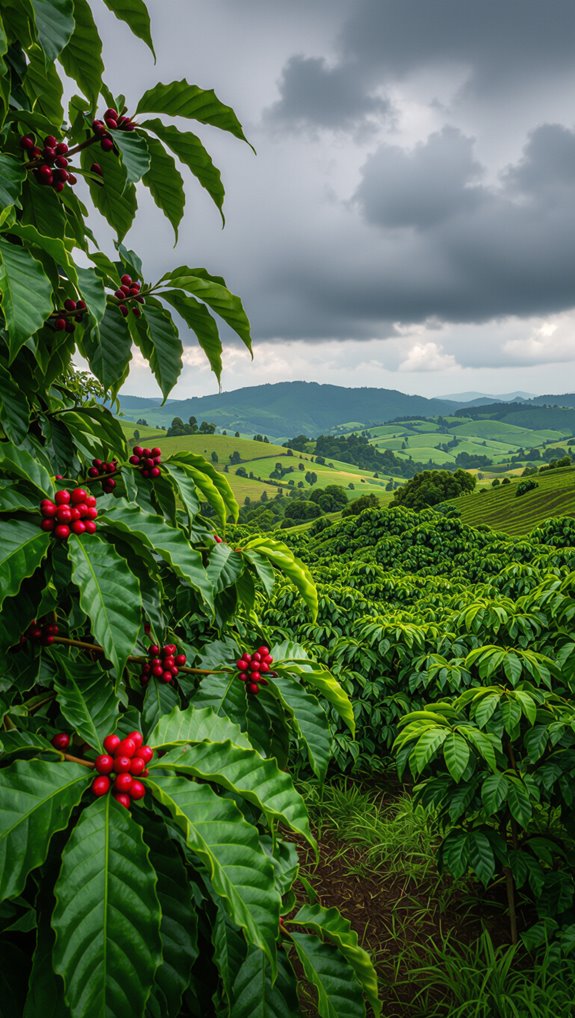
Climate change isn’t just threatening your future coffee supply—it’s already reshaping the entire global coffee production landscape.
Key impacts on coffee are dramatic and widespread:
- 47% of global coffee production faces potential land loss
- Rising temperatures disrupt growing cycles and plant health
- Major producing countries like Brazil and Colombia see dramatic yield drops
- Global coffee prices have surged nearly 40% due to weather disruptions
Farmers are battling unpredictable weather, with some relocating to higher elevations and adopting new techniques.
By 2050, up to 50% of suitable coffee land could vanish, while global demand is expected to double.
These shifts mean your morning brew isn’t just getting more expensive—it’s becoming increasingly uncertain.
How Roasting and Processing Affect Coffee Prices
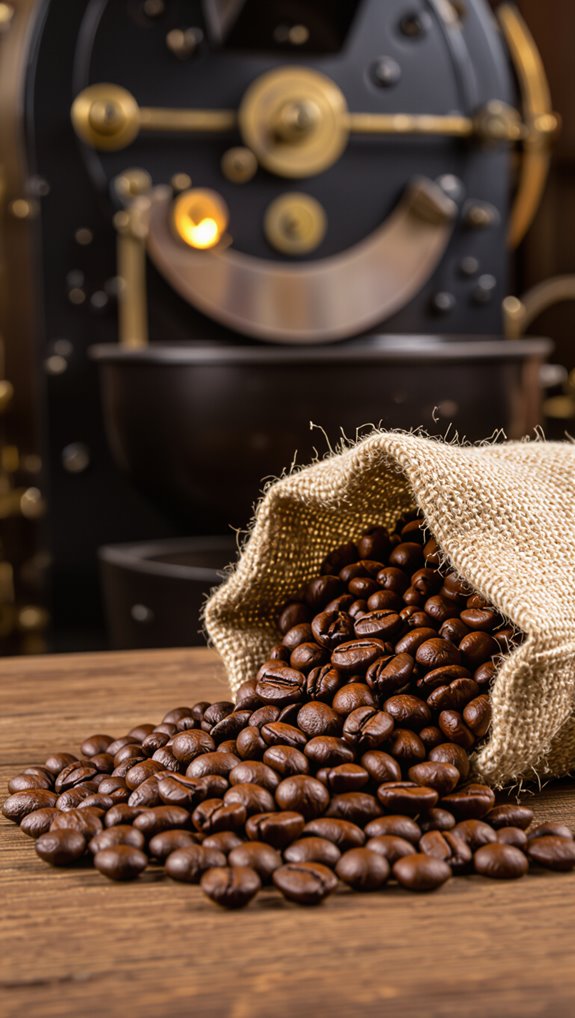
Coffee’s journey from bean to brew involves a complex roasting and processing dance that significantly impacts your morning cup’s price tag. The intricate process begins with green coffee bean selection and transforms through roasting, where beans lose 10-15% of their weight, driving up costs. Electric roasters, costing $10,000 to $50,000, add to the expense, while energy efficiency and batch size play crucial roles in pricing.
| Roasting Factor | Cost Impact |
|---|---|
| Equipment | High Initial Investment |
| Energy Use | Significant Ongoing Expense |
| Batch Size | Efficiency Varies |
| Quality Control | Additional Processing Costs |
Each roasting decision directly influences the final price you’ll pay for that perfect brew.
Ways to Save Money on Quality Coffee
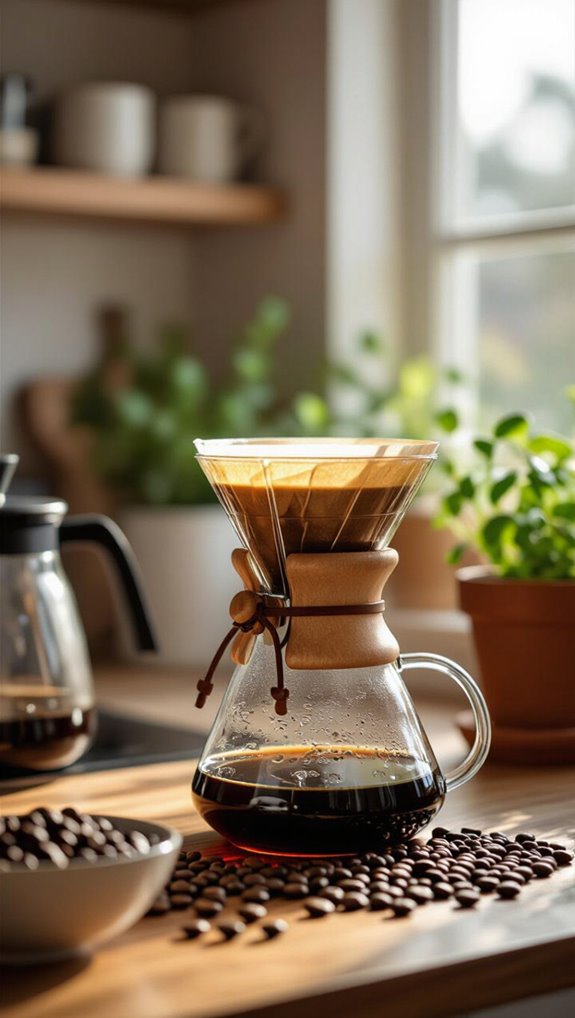
If you’re looking to slash your coffee expenses without sacrificing quality, you’ve just hit the jackpot. Smart coffee lovers know there are strategic ways to enjoy premium beans without breaking the bank.
- Subscribe to coffee services for 10-35% discounts on quality beans
- Buy beans in bulk and store them properly to maximize freshness
- Brew at home instead of purchasing café drinks
- Explore local and online roasters for cost-effective specialty options
Investing in home brewing equipment and comprehension of bean storage can transform your coffee experience while keeping your wallet happy. The key is balancing quality, convenience, and smart purchasing strategies.
Is Expensive Coffee Actually Worth the Price
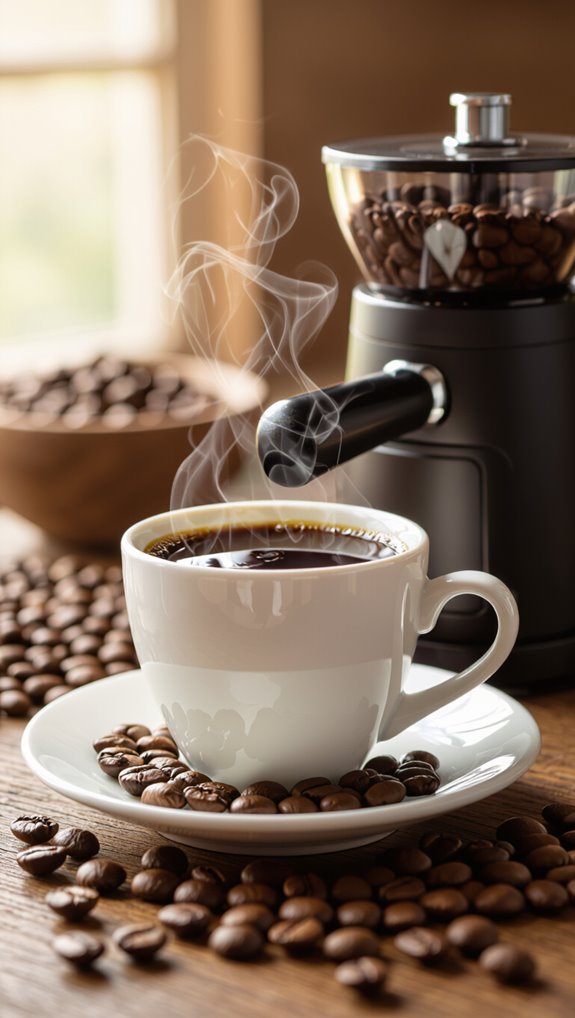
Let’s break down why premium coffee can actually be worth every penny you’ll spend. Quality isn’t just marketing hype—it’s a sensory experience backed by scientific grading and careful production.
| Price Range | Flavor Complexity | Value Proposition |
|---|---|---|
| $8-12/bag | Basic taste | Limited enjoyment |
| $12-20/bag | Balanced profile | Good complexity |
| $20-30/bag | Exceptional notes | Premium experience |
Professional cupping reveals massive differences between commodity and specialty coffees. Higher-priced beans deliver intricate flavor profiles—think vibrant fruit notes, nuanced chocolate undertones, and clean, refined tastes. You’re not just buying coffee; you’re investing in a meticulously crafted beverage that transforms your daily ritual from mundane to extraordinary.
Frequently Asked Questions
Does Drinking Coffee at Home Actually Save Money Compared to Cafes?
Yes, I’ll save big by brewing at home! My daily coffee costs can drop from $4 at cafés to just $0.26–$1.00, potentially saving me over $1,000 annually with some smart brewing choices.
How Long Can I Store Coffee Beans Before They Lose Flavor?
I recommend storing coffee beans for up to 3 weeks to enjoy peak flavor. After that, they’ll start losing their delicate taste. Keep them in an airtight container, away from heat and light, and grind just before brewing.
Are There Budget-Friendly Coffee Brands That Still Taste Good?
I’ve found several budget-friendly coffee brands that taste great, like Café Bustelo, McDonald’s McCafé, and Walmart’s Great Value Donut Shop. They offer solid flavor profiles without breaking the bank, and I’ll gladly drink them daily.
Can I Reduce Coffee Expenses Without Compromising on Quality?
I can reduce coffee expenses by exploring alternative origins, comparing prices across roasters, and considering direct trade options. I’ll bulk purchase when possible and look for cost-effective blends that still maintain good flavor quality.
What Brewing Method Is Most Cost-Effective for Daily Coffee?
I’ve found the AeroPress to be the most cost-effective brewing method. It’s versatile, requires minimal coffee, has low equipment costs, allows easy cleaning, and lets me experiment with different brewing styles without breaking the bank.
In Conclusion
Coffee prices continue to rise due to climate change, labor shortages, supply chain disruptions, and increased processing costs—but understanding why coffee is so expensive empowers you to make informed choices. Rather than abandoning your daily ritual, you can adapt by buying in bulk, exploring direct-trade options, or investing in equipment that maximizes every bean’s potential.
Speaking of equipment, the right coffee machine can actually help you save money long-term while delivering café-quality results at home. Check out our comprehensive coffee machine reviews to find smart, well-reviewed options that fit your budget and brewing preferences. With the right knowledge and tools, you can continue enjoying exceptional coffee without the financial strain—proving that your morning cup doesn’t have to be a luxury you can’t afford.

